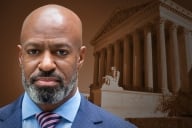You have /5 articles left.
Sign up for a free account or log in.
As many as 1.5 million college students who probably would have qualified for Pell Grants in 2003-4 did not apply for federal financial aid, according to a study by the American Council on Education. A report on the study estimates that that number is up 76 percent over 1999-2000, and concludes that "more outreach is needed to inform low- and moderate-income students about the availability of financial aid and the application process."
The ACE report, "Missed Opportunities Revisited: New Information on Students Who Do Not Apply for Financial Aid," updates a 2004 report that sought to examine why only 50 percent of all undergraduates in 1999-2000 had filled out the Free Application for Federal Student Aid, which most colleges and governments use to decide eligibility for financial assistance.
The council concluded then that of the more than 1.7 million low- and middle-income students who did not fill out the aid application, about 850,000 would have been likely to receive a Pell Grant had they applied.
In the followup, which examines data from students who were enrolled at degree-granting institutions in the 2003-4 academic year, the council found that the proportion of all students who filled out the FAFSA had risen to 59 percent.
That's the good news, suggesting increased awareness over all about the availability of federal aid. The study found meaningful increases between 1999-2000 and 2003-4 in the proportion of half-time students, financially independent students and community college students who applied for aid.
But because enrollments swelled over that period, and because students from socioeconomically disadvantaged families were less likely to fill out the federal form than their peers, the council estimates that the number of low- and moderate-income students who did not apply for federal aid actually increased to 1.8 million in 2003-4, from 1.7 million in 1999-2000.
And of those, the council concluded, the number who might have qualified for a Pell Grant had grown to 1.5 million, from 850,000 in 1999-2000. That sharp rise (of 76 percent) is attributable to the $800 increase in the maximum Pell Grant during that period, which made more students eligible for the program, and to the upturns in enrollment and the number of FAFSA applicants.
"While we are pleased to see more students from the general population apply for aid, it is disappointing that students who could benefit the most from financial aid are not making progress and are actually losing ground," said Jacqueline E. King, director of the Center for Policy Analysis at ACE, which produced the report.









